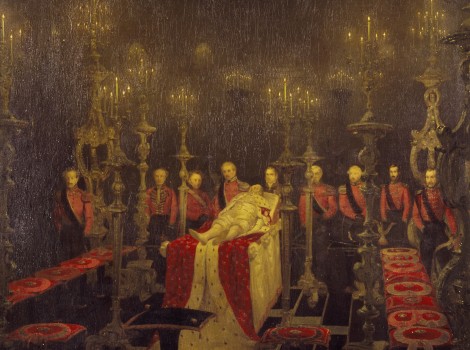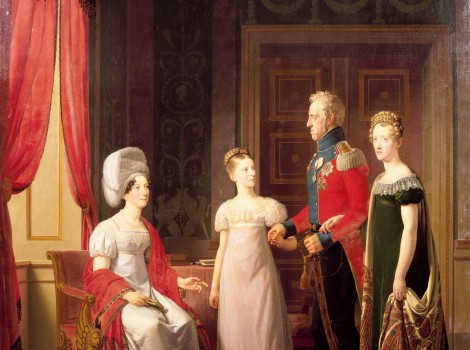Frederik VI and family
Frederik VI strolling with his family in Frederiksberg Gardens, around 1813; Watercolour by Johannes Senn. As a consequense of being allied to France during the turbulent years of Napoleon Wars, not having much of a choice though, this period was primarliy influenced by the crucial loss of Norway and the complete defeat against the British navy. Despite of, or more correctly because of, this political decline both danish arts and litterature flourished and as such is presented as the Golden Age in regards to cultural achievements.
One of the denifitive trends in this Golden Age was civil or bourgeois ideals, which appears in many of the paintings of the day, including this one. Typical of this trend is the deliberate lack of pompous symbols accredited to absolute monarchs, as seen, for instance, in the previous room in the painting of Christian VII.

 Dansk
Dansk
 English
English
 Deutsch
Deutsch










